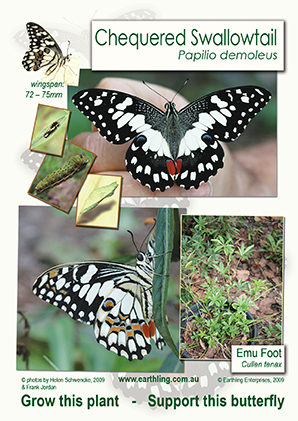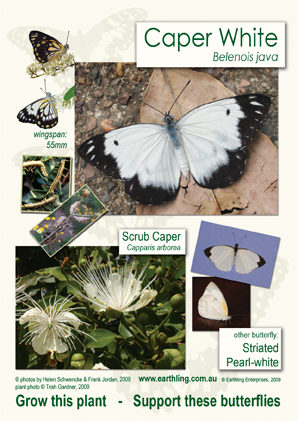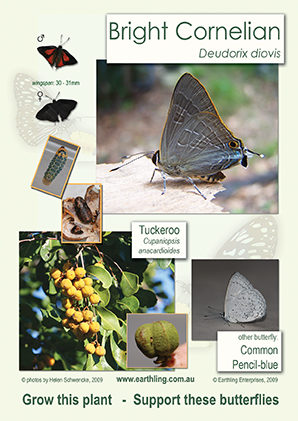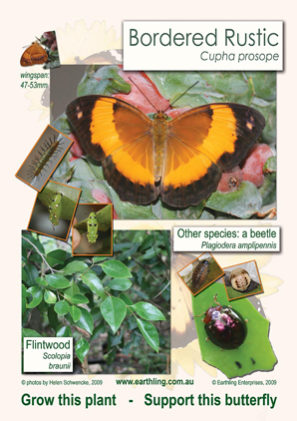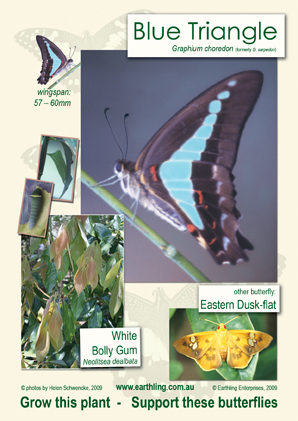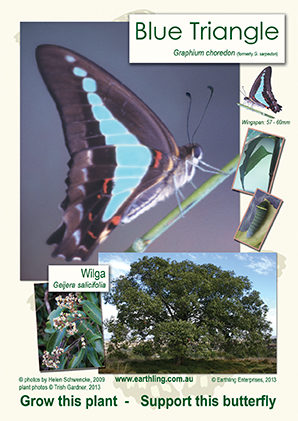Common Crow
(Euploea core)
Also known as Common Australian Crow or Oleander Butterfly, the Common Crow is found in Queensland and northern New South Wales, also occurring across northern Australia and Western Australia and even Victoria. Also found in south-east Asia – known in India as the common Indian crow. Has white spots and exhibits slow flight, usually fairly low. Found in various ecosystems including coastal paperbark wetlands, parks and gardens.
Host Plant:
Monkey Rope, (Parsonsia Straminea), or Common Silkpod is a woody vine of the dogbane family. It is found in Queensland and New South Wales.
Learn more about the Common Crow in the book entitled Create More Butterflies by Frank Jordan & Helen Schwencke which is available from Earthling Enterprises



